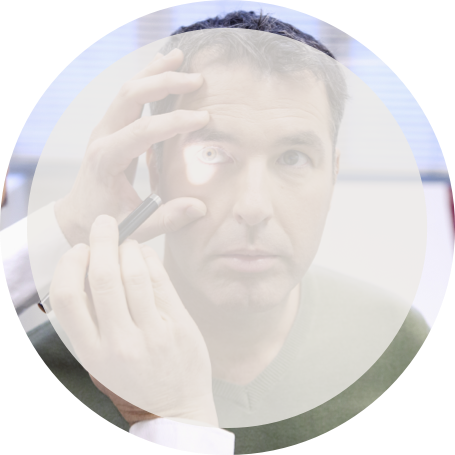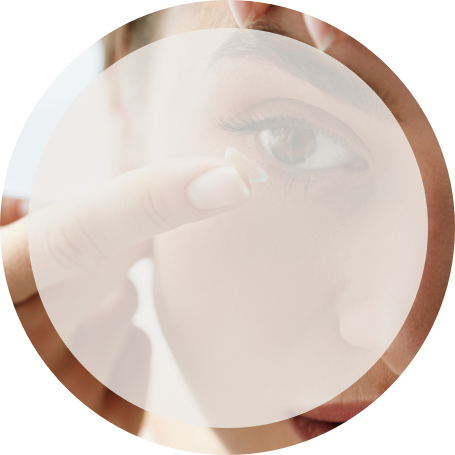Imagine your eyes feeling scratchy and uncomfortable, making it hard to focus. That discomfort can sometimes extend beyond just your vision, manifesting as headaches that linger throughout your day.
When dry eyes don’t get the lubrication they need, you might strain to see clearly, leading to tension and discomfort that radiates into your head. This connection between dry eyes and headaches is often overlooked, but recognizing it is key to finding the relief you need.
What Are Dry Eyes?
Dry eyes happen when your eyes don’t produce enough tears or the tears evaporate too quickly. Tears are essential for maintaining a healthy eye surface and providing clear vision. When this delicate balance is disrupted, it can lead to a condition known as dry eye syndrome.
People with dry eyes often report a gritty feeling, as though something is stuck in their eyes. They may also notice:
- Redness
- Irritation
- Blurred vision
- Tearing
Symptoms of Dry Eyes
Common symptoms of dry eyes include a persistent sensation of dryness, itching, or burning. Many people experience sensitivity to light or find it challenging to wear contact lenses comfortably. These symptoms can gradually worsen, becoming more problematic over time.
Blurriness is another telltale sign of dry eyes, especially when reading or staring at a screen for extended periods. This can be particularly concerning for those who rely heavily on visual tasks throughout the day.
Interestingly, some people with dry eyes experience excess tearing, which seems counterintuitive. This happens because the eyes overcompensate for the dryness by producing more tears, but they aren’t the right kind needed for proper lubrication.
Why Are My Eyes So Dry?
- Environmental conditions like wind, smoke, or dry air can play a significant role.
- Prolonged screen time is another common culprit, as it reduces blinking frequency, leading to quicker tear evaporation.
- Certain medications and underlying health conditions, such as antihistamines or autoimmune diseases, can also cause dry eyes.
- Hormonal changes, particularly in women, can have an impact on tear production.
- Age is another factor, as tear production tends to decrease as we get older.
Can Dry Eyes Really Cause Headaches?
While dry eyes themselves do not directly cause headaches, the discomfort and strain they create can contribute to the development of headaches. When your eyes are dry, you may squint more or strain your eyes, leading to tension-type headaches.
Visual fatigue from trying to focus with dry eyes can also lead to headaches. This is especially true for those who spend long hours in front of a computer or reading without breaks.
How to Manage Dry Eyes
Managing dry eyes often begins with simple lifestyle changes.
- Using a humidifier can help maintain moisture in the air, reducing the evaporation of tears from your eyes.
- Artificial tears or lubricating eye drops are commonly recommended to supplement natural tears. These products can provide temporary relief and are available over the counter.
For more persistent symptoms, it’s important to consult with an eye care professional. They can assess your condition and recommend treatments tailored to your needs.
Home Remedies for Dry Eyes
There are several home remedies worth trying for dry eyes.
- Applying warm compresses to your eyes can help unclog blocked oil glands, improving tear quality.
- Make sure to stay hydrated by drinking plenty of water throughout the day. Dehydration can intensify dry eyes, so maintaining fluid intake is important.
- Omega-3 fatty acids, found in foods like fish or flaxseed, can also support eye health. Incorporating these into your diet may help improve tear production.
In-Office Treatments for Dry Eyes

OptiLight by Lumenis
OptiLight by Lumenis offers an innovative intense pulsed light (IPL) system that delivers targeted light therapy just below the eyes.
This treatment addresses meibomian gland dysfunction by alleviating thick oil blocking the glands while minimizing inflammation. Each session typically lasts 10–15 minutes.
LipiView
LipiView is a non-invasive device providing high-definition imaging of the meibomian glands, helping to assess your tear film’s lipid content and quality. This enables us to determine which dry eye treatment is most suitable for your dry eye symptoms and signs.
LipiFlow
LipiFlow is a non-invasive treatment that unclogs blocked meibomian glands using gentle heat and massage to melt the thick oil. This allows natural oil production to resume, creating a sufficient oil layer in the tear film and reducing the evaporation of tears.
Amniotic Membrane Therapy
Amniotic membrane therapy, secured by a flexible plastic ring placed between the eyelids, can treat moderate to severe dry eye along with other ocular surface conditions. The procedure is quick, virtually painless, and offers long-lasting benefits.
Low-level light therapy
Low-level light therapy (LLLT) is another noninvasive technique for treating meibomian gland dysfunction. This LED light therapy warms the eyelids and enhances oil production, improving symptoms and potentially reducing facial wrinkles, acne, and rosacea.
Treatment sessions can also be completed in about 15 minutes.
Everyday Habits to Help Prevent Dry Eyes & Headaches
Preventing dry eyes and associated headaches involves incorporating a few mindful habits into your routine.
- Take regular breaks from screens by following the 20-20-20 rule—every 20 minutes, look at something 20 feet away for at least 20 seconds.
- Blinking more frequently during screen use can help keep your eyes lubricated.
- Adjusting your screen’s brightness and contrast can also reduce strain.
- Always wear sunglasses outdoors to protect your eyes from drying wind and harmful UV rays.
These simple practices can go a long way in keeping your eyes comfortable and reducing headache risk.
Need Help with Dry Eyes?
If you’re struggling with dry eyes or headaches and want personalized advice or treatment options, don’t hesitate to book an appointment with Family Vision Care. Our team is here to help you see clearly and comfortably, ensuring your eye health is in the best hands.
















